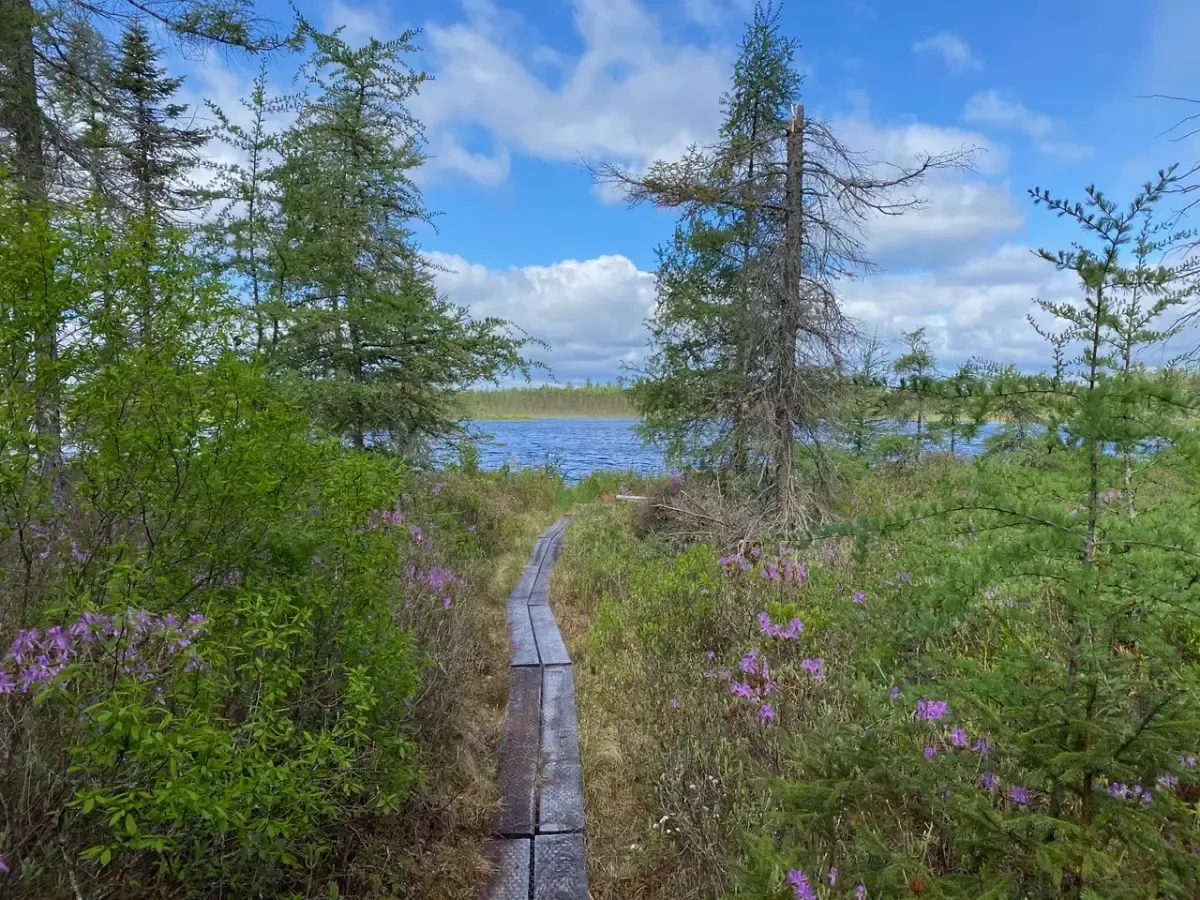
Little Cherry Pond at Pondicherry Division in the Silvio O. Conte National Fish and Wildlife Refuge. (Photo: David Govatski, courtesy USFWS)
This op-ed was originally printed in the Union Leader on February 20, 2024.
A NEW YEAR brings new opportunities for land conservation across New Hampshire that benefit people, ecosystems, and the lands we all enjoy. Our state has some of the nation’s most treasured landscapes that increase the state’s resilience in the face of climate change and provide locations to recreate outdoors.
Congress has an opportunity in 2024 to protect existing critical investments in New Hampshire’s land conservation and create new programs to enhance and restore the Connecticut River Watershed. Fortunately, members of the New Hampshire Congressional delegation are already taking action to protect investments conserving the Granite State’s natural resources through their co-sponsorship of the Connecticut River Watershed Partnership Act (CRWPA), and their work to oppose any drawback of Land and Water Conservation Fund (LWCF) dollars.
New Hampshire senior U.S. Sen. Jeanne Shaheen recognizes the need for sustained land conservation here in the Granite State and beyond. She has introduced legislation in Congress to help conserve the Connecticut River Watershed and she led Senate colleagues in a letter opposing a proposed $100 million rollback of LWCF funding.
The CRWPA enhances coordination among federal and state agencies, non-profits, tribes, and communities to restore and enhance the natural resources of the multi-state region it spans, which includes Connecticut, Massachusetts, New Hampshire, Vermont, and Maine. The CRWPA will create a dedicated funding stream that supports nonregulatory conservation, restoration, education, and recreation efforts in the watershed. This important legislation has been led and supported by a diverse group of partners from the Connecticut River Watershed Partnership and has been co-sponsored by U.S. Rep. Annie Kuster and Sen. Maggie Hassan in New Hampshire.
In New Hampshire, LWCF has funded land purchases from willing sellers to conserve 12,950 acres in the state’s portion of the Silvio O. Conte National Fish and Wildlife Refuge. The Connecticut River drains 11,000 square miles and is home to 2.4 million residents, as well as hundreds of plant and animal species, many of which are priorities for state and/or federal protection. The 22 divisions of the Conte Refuge have been conserved in part thanks to major investment from LWCF, a keystone piece of federal conservation legislation that has protected outdoor treasures in every state in the country.
LWCF was created by Congress in 1964 and uses revenues from the depletion of one natural resource — offshore oil and gas — to support the conservation of another precious resource — our land and water. Every year, $900 million in royalties paid by energy companies drilling for oil and gas on the Outer Continental Shelf are put into this fund to increase access to outdoor recreation for all Americans.
Those proposing to rescind $100 million this fiscal year argue that because the money went unspent it is not needed. But there are many existing LWCF project needs throughout New Hampshire — especially in the Connecticut River Watershed — that sometimes wait years for funding, so the argument that funding isn’t needed doesn’t hold much water here.
Read on for some examples of where this “leftover” money could be put to work conserving land, protecting wildlife, and providing greater access to the outdoors in New Hampshire.
Opportunities
The Blueberry Swamp Division, comprising 1,236 acres, lies in northwestern Coos County in Columbia, New Hampshire. Blueberry Swamp is home to neotropical warblers, thrushes, vireos and other forest-dependent birds. There is one LWCF project at Blueberry Swamp waiting for funding that will conserve 54 acres of core wildlife habitat and recreational land.
The Pondicherry Division of the Silvio O. Conte National Fish and Wildlife Refuge is known for its high-quality habitat and rich, diverse assemblage of wildlife species, particularly birds. There are four LWCF projects waiting for funds in the Pondicherry Division that would add 285 acres of land to the existing 6,491 acres for enhanced conservation and recreation.
America is losing natural areas and forest cover at an alarming rate, and New England is no exception. Every year, 28,000 acres of forests in New England are lost forever to development or energy infrastructure. That is why we are grateful to New Hampshire’s leaders, like Rep. Kuster and Sens. Shaheen and Hassan, who recognize the critical investments of LWCF and the CRWPA in enhancing and sustaining the Granite State’s natural resources for future generations. U.S. Rep. Chris Pappas, representing New Hampshire’s 1st Congressional District, has been an ally on LWCF and environmental conservation.
We are hopeful he will also sign on to the CRWPA as a co-sponsor.
With strong leadership from our New Hampshire delegation opposing any rollback of LWCF dollars and supporting the CRWPA, we will be able to strengthen New Hampshire’s commitment to preserving our state’s open spaces. And that’s a New Year’s resolution for land conservation that’s worthy of everyone’s support.
Matt Leahy, of the Society for the Protection of New Hampshire Forests, lives in Concord. David Govatski, of Friends of Pondicherry, lives in Jefferson. Chris Thayer, of the Appalachian Mountain Club, lives in Sugar Hill.
